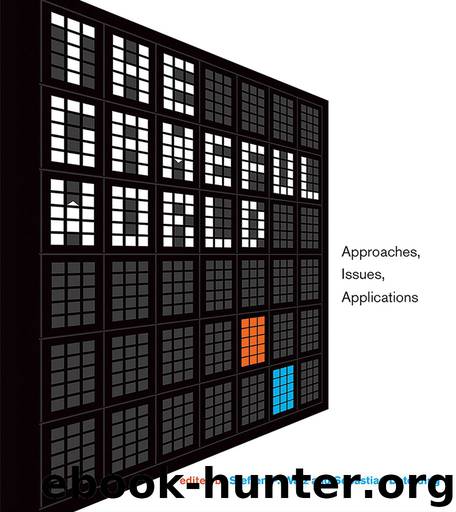The Gameful World: Approaches, Issues, Applications by Steffen P. Walz & Sebastian Deterding

Author:Steffen P. Walz & Sebastian Deterding [Walz, Steffen P.]
Language: eng
Format: azw3
Publisher: The MIT Press
Published: 2015-01-23T05:00:00+00:00
Play and Passivity
Ignorant of the poor reception of the PlayPump among many of its users, some first-world designers went further in interpreting the system’s incorporation of play: as a means by which communities could “celebrate” the gift of water they had been given through the donation of the pump. “Water pumps are placed in areas of high drought and provide drinking and irrigation water. They greatly benefit the surrounding areas and are seen as something to be celebrated” the Centre for Design Innovation in Ireland reasoned. “Designing a pump which incorporates the play of children, takes this emotional element into account. Its design combines the function of the pump with the celebration of its installment and use” (Centre for Design Innovation 2009).
This representation of the PlayPump as enabling celebratory expressions of gratitude is reinforced by Crealy Adventure Parks in Britain, which installed modified PlayPumps in its parks as an amusement ride for first-world children. They proposed to install a cash machine next to each roundabout “where children can make donations. As people insert money or swipe a credit card, a screen above will show children in Africa riding on the roundabout and shouting, “Thank you!” The money raised will go to install more roundabout pumps in Africa” (Lamb 2005).
But many users of the PlayPump were not grateful for the “gift” they had received. Many wanted their original hand pumps back. While the PlayPump is given without cost to users, the Mozambiquan team noted that at least some communities “prefer paying while keeping control of their services” as they had previous to the PlayPump (Obiols and Erpf 2008, 39). Where some communities had to pay into water-point committees that managed hand pumps, the Play-Pump promised a free maintenance service funded by billboard income. The PlayPump could only be repaired by the company managing this income—but users experienced long delays waiting for this service, and the pump was not designed for repair by users (as some hand pumps are). As Joaquim George, of Mozambique’s Rural Water Authority, told Costello: “we know it is free, but it doesn’t work properly” (Costello 2010b). Both UNICEF and the Mozambiquan government’s reports identified problems with a lack of adequate community consultation in installing Play-Pumps, which compounded their frustration with the system. Users were denied an informed technology choice between the PlayPump and the existing hand pumps that the PlayPump replaced.
The PlayPump’s treatment of its users as passive recipients of aid denied a choice of preferred technology and a part in its maintenance—whose only role designed into the technology is a daily celebration of gratitude through play—is reflected in the PlayPump’s relationship with its funders, its first-world audience. Audiences as well as users are disempowered by the PlayPump, which offers them the opportunity to give with the minimum of effort, and without advancing their understanding of the developing-world issues they desire to mitigate. Crealy Adventure Parks’ proposed mode of giving, whereby first-world visitors swipe their credit cards and receive an instant pre-recorded message of gratitude, is emblematic of this relationship.
Download
This site does not store any files on its server. We only index and link to content provided by other sites. Please contact the content providers to delete copyright contents if any and email us, we'll remove relevant links or contents immediately.
Blood, Sweat, and Pixels by Jason Schreier(3566)
Godot 4 Game Development Cookbook by Jeff Johnson(2859)
Dawn of the New Everything by Jaron Lanier(2738)
The Art of Doom by Bethesda(2108)
Significant Zero by Walt Williams(1929)
Creative Character Design by Bryan Tillman(1888)
Art Of Atari by Tim Lapetino(1750)
World of Warcraft Chronicle Volume 3 by Blizzard Entertainment(1707)
The Ultimate Roblox Book by David Jagneaux(1657)
Mission Python by Sean McManus(1655)
Pillars of Eternity Guidebook by Obsidian Entertainment(1625)
Dawn of the New Everything: Encounters with Reality and Virtual Reality by Jaron Lanier(1578)
Unreal Engine 4 Virtual Reality Projects by Kevin Mack(1527)
1628927445Game by Unknown(1524)
Unreal Engine Virtual Reality Quick Start Guide by Jessica Plowman(1513)
Learning D by 2015(1490)
The Ultimate Player's Guide to Minecraft by Stephen O'Brien(1489)
Unity 2018 By Example by Alan Thorn(1430)
Road Games by Road Games(1416)
